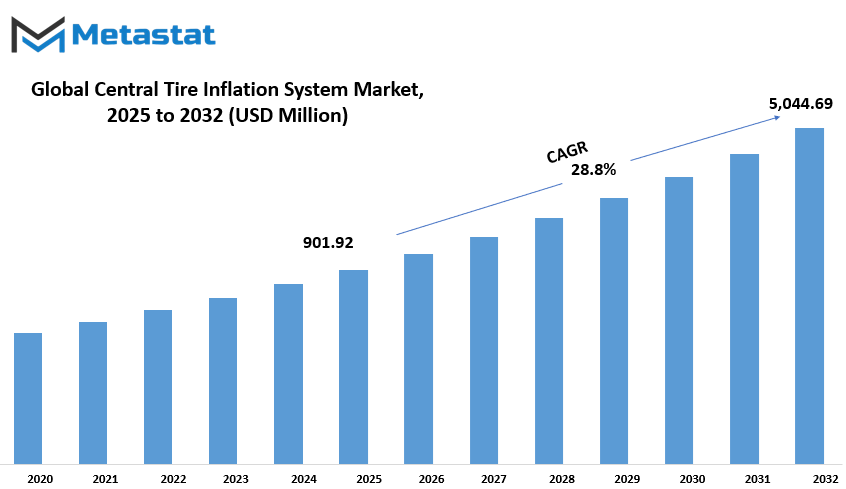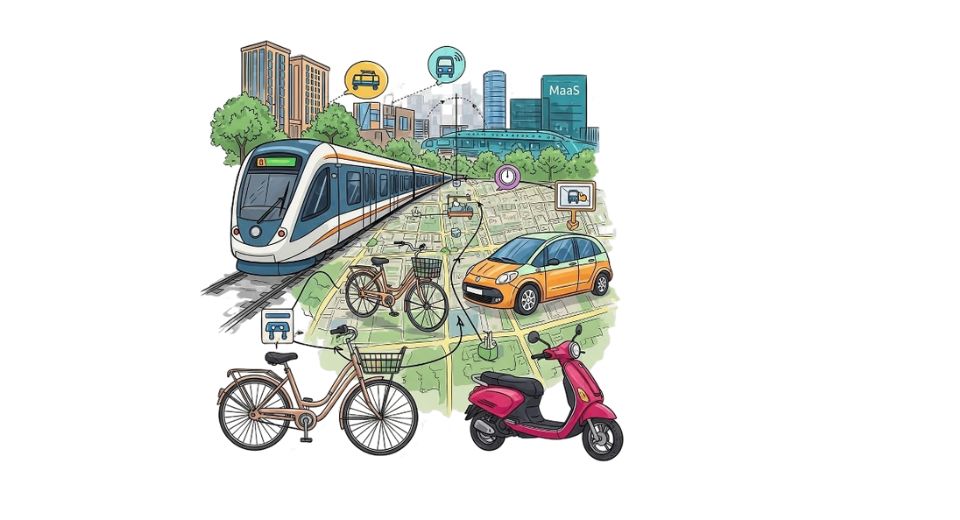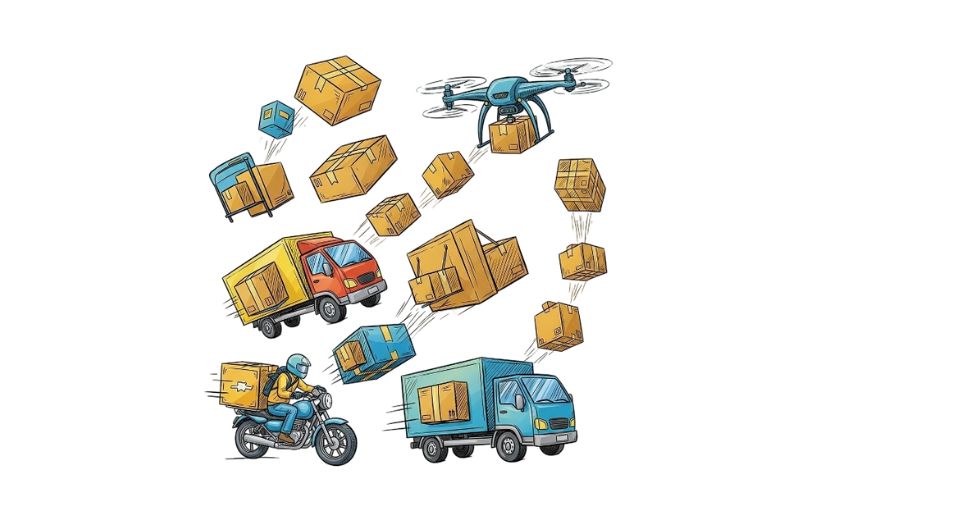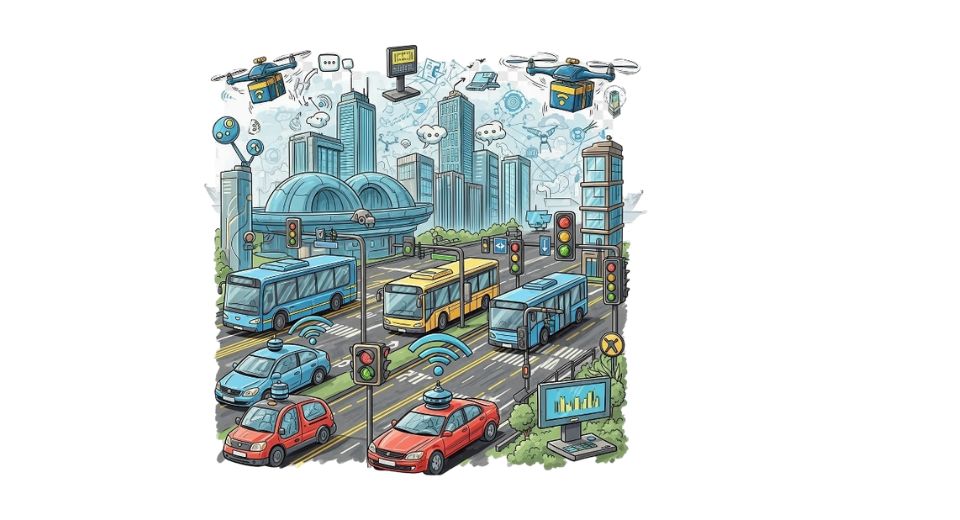MARKET OVERVIEW
The Global Central Tire Inflation Systems market is older and more established in offering solutions for increased mobility, flexibility, and performance on various terrains. It is going to be a big change from the traditional product application as technological advances discover newer avenues for automotive engineering. Very often, the discussion remains on performance improvement or cost effectiveness, while having more far-reaching looks into internal drives of trends that are going to move this market in ways not conventionally looked at.
The one, however, that will substantially determine the prospects for the market would be its aspects in the evolution of autonomously connected automobiles. The feature that combined with smart vehicles will integrate tire inflation with intelligent pressure regulation, not only regulating air pressure but perfectly synchronizing with artificial intelligence-based diagnostics for instant adjustment in the event of road conditions and changes in load, thereby introducing such capabilities into the setup of vehicles as an integral part of the the smart vehicular systems.
This other aspect goes further than the conventional discussion on the industry-the green aspect. Where fuel economy gets highlighted, sustainable aspects as related to optimized tire pressure measurements will now take front row center stage. As stricter environmental regulations become a reality and since the reduction of carbon emissions is a top priority in the global arena, it only deepens the exploration into sustainable materials and energy-saving technologies whereby the common eco-footprint of these systems becomes more improved. Such aspects as biodegradable materials, renewable energy-powered inflation systems, and recyclability will become more and more commonplace, shifting the market toward more environmentally considerate applications.
Defense will always remain a key driver for developing new technologies in this area. This is because military applications require top-tier adaptability, and the aspiration toward next-generation tire inflation systems that will repair themselves, inflate according to requirements, and traverse extreme terrains will require a complete rethink. Because harsh environments under which these systems will be used must be coupled operationally with stable performance, strategic mobility will be offered to armed forces around the world in complex landscapes. The increase in military modernization programs, on the other hand, will accelerate research and development innovations, pushing the limits at which such systems operate.
Beyond the ground sector, central tire inflation technology will influence its applications in unconventional sectors that go beyond land. Adaptations of pressure management for specialized vehicles operating in extreme conditions will also be part of innovations in aerospace and maritime industries. Future exploration vehicles, deep-sea transporters, and even extraterrestrial rovers will all incorporate superior pressure regulation mechanisms developed from the technological base of this market. With scientific exploration gearing into difficult environments, so will central tire inflation expertise serve beyond reach of conventional industries.
Perhaps above all else, the influence of artificial intelligence, data analytics, and predictive maintenance will radically change the way these systems operate. Predictive algorithms will make it possible for pressure settings to be modified into their exact requirements using historical data, vehicle usage patterns, and terrain analytics to enable proactive maintenance and minimal downtime. These developments will carry with them the overall trend of automation in fleet management, logistics, and heavy-duty transportation, whereby real-time decision-making will be done using intelligent computational models.
In essence, the Global Central Tire Inflation System market will go to become much more than its established borders to combine new technological, environmental, and strategic developments in different sectors. It will mainly be about tire pressure optimization; however, its trajectory will not exclusively be determined by a few cutting-edge innovations but rather by their convergence into New Worlds. As industries embrace automation, sustainability, and advanced mobility solutions, this market will not only adapt but will also play a defining role in shaping the future of transportation technologies.
Global Central Tire Inflation System market is estimated to reach $5,044.69 Million by 2032; growing at a CAGR of 28.8% from 2025 to 2032.

GROWTH FACTORS
The Global Central Tire Inflation System (CTIS) market has been booming all along owing to the growing demand for adopting tire pressure control for off-road and military vehicles, operating on different terrains, where tire pressure adjustment can be made in real-time. It enhances traction and stability during movement over rough terrain. It offers great benefit around the vehicle mobility in operational efficiency in combat zones. Application in military benefits this technology also with respect to mobility in challenging environments.
Moreover, the commercial trucking industry is increasingly emphasizing fuel savings and tire life. Maintaining optimal tire pressure can reduce rolling resistance, thus lowering fuel consumption while extending tire life, translating into saving money for fleet operators.
There are several factors limiting the penetration of CTIS that gags the advantages. The most persistent one remains the high initial cost at which the system is pitched especially considering the advanced technology along with its fine and costly components that are vital for pressure adjustments. This can be a costly venture for small- and medium-sized fleet operators. Additionally, this kind of installation is quite complicated in that it requires special knowledge and equipment.
Another prime factor is that maintenance of these systems requires extreme cumberment in difficult environments such as higher temperatures, dust, and moisture, as these factors reduce performance. More technical complexity results in more broken parts, which translates to costly maintenance and possible downtime for vehicles.
However, the integration of IoT and AI is anticipated to bring new prospects for CTIS in the future. These technologies completely digitize and automate predictive maintenance of the system. As such, the effectiveness and reliability of the system may be further enhanced. There is an example of preventive maintenance that AI-driven analytics can set for failure beyond which AI might fail to predict accurate causes.
Furthermore, today's state of the art in IoT connectivity provides real-time data streaming on tire pressures to fleet managers so they can realize the values of better car performance. These developments in technologies enhance safety and efficiency, but they will also address some of the existing problems in terms of maintenance and the reliability of the system.
With the growing demand for adaptive tire pressure control for use, manufacturers are therefore focusing their attention chiefly on cost-effective solution development probably to make CTIS affordable for all. Sensor technology innovation will continue to drive advancements in automation-focused user-friendly and maintainable systems in fact.
Though the concerns exist, with the improvements in fuel efficiency, tire life, and overall vehicle performance, CTIS is turning out to be a very beneficial technology for an increasing number of applications. Research and development continue to expand the market possible for practical and affordable military-to-commercial solutions in the future.
MARKET SEGMENTATION
By Type
As industries recognize the merits of optimized tire pressure across various applications, the Global Central Tire Inflation System (CTIS) market gains attention. This system is instrumental in augmenting vehicle performance and fuel economy while decreasing tire wear. The mounting demand for advanced tire management solutions for commercial, military as well as agricultural vehicles has prompted steady market growth. Firms are increasingly looking toward CTIS technology to enhance operational efficiency, providing improved traction, stability, and tire longevity.
Among the factors propelling the growth of this particular market is the dire need for improved mobility through different terrains. Because CTIS-equipped vehicles can modify tire pressure dependent on road conditions, the systems greatly favor off-road and heavy-duty applications. For military operations, such electromagnetic systems are necessitated to perform under adverse environments without jeopardizing vehicle performance. In agriculture, reduced soil compaction enabled by CTIS technologies is critical to sustaining crop yield.
Market segmentation relates to two types: Manual CTIS (this is valued at $636.89 million) and Automatic CTIS. Manual systems necessitate user intervention to change tire pressures, whereas automatic systems do so without human input: the latter being far more convenient for applications that require constant tire pressure changes. With increasing efforts directed at automation and ease of use in the industry, the demand for automatic CTIS will soon gain by leaps and bounds.
The market expansion spans geography, North America and Europe being the leaders due to well-established automotive and defense industries. In these regions, investments in military-grade vehicles and commercial fleets have ramped up the penetration of CTIS. Growing economies of the Asia-Pacific region are also witnessing a boom in the related market due to agri-mechanization and infrastructure development.
Technological advances have also acted as market growth propellers. The advancement of sensor technology and connectivity being applied in designs has greatly increased the operational efficiency and effectiveness of the systems to allow real-time monitoring and adjustment. Manufacturers are also integrating telematics solutions into their CTIS, giving fleet operators better control over vehicle performance.
Opportunities abound within the market, but high initial costs and maintenance concerns remain challenges. Nevertheless, as companies begin to realize the long-term benefits of reduced tire replacement costs and better fuel economy, CTIS adoption is anticipated to rise. With the continuous advancements and increasing demand in various industries, this market is expected to flourish to provide better mobility solutions to various sectors.
By Vehicle Type
With the increasing demand from several vehicle segments for the same, the market for Global Central Tire Inflation Systems is predicted to expand exponentially. The market segmentation is based on the type of vehicle-includes military vehicles, commercial vehicles, agricultural vehicles, and off-highway vehicles. Each segment is very important for the application of these systems, and enhance their performance, efficiency, and durability.
Military vehicles require central tire inflation systems that can be used across a wide range of terrains to optimize traction and minimize tire damage. This consideration becomes critically important in operations where defense vehicles must be trusted to work in harsh conditions. Variation of tire pressure as pertained to the terrain adds to mobility and fuel efficiency; hence these systems are very much value-added for military operations.
Commercial vehicles are furnished with central tire inflation systems that restrain tire wear and enhance fuel efficiency. Trucks and trailers that haul goods over long distances need to sustain a uniform performance. Such systems help stabilize and reduce maintenance costs. Optimization of pressure levels avoids uneven wear of tires, thus contributing to the safety and longevity of fleets engaged in commercial activity.
Central tire inflation systems are increasingly gaining acceptance in agriculture because of their soil-protective and compaction-minimizing abilities. Farmers apply these machines in a variety of terrains; depending on the soil conditions, they could adjust tire pressure to minimize the damage on crops and soil structure. This means improved crop yield with reduced operational costs, thus making this system one of the indispensable tools of modern agricultural practices.
Off-road vehicles, such as construction and mining equipment, also utilize these systems to keep up efficiency in demanding terrains. Uneven and rough surfaces can cause rapid tire wear and hence frequent replacement and higher costs. Having a tire pressure management system would give these vehicles a greater grip and lower fuel consumption while increasing tire life. Thus, commercial tire inflation systems stand out as a good solution for industries that rely on heavy machinery.
Another driver fuelling the demand for central tire inflation systems is increasing attention to sustainability and fuel efficiency. These systems facilitate lower fuel consumption and carbon emissions through optimal tire pressure. Therefore acceptance for these systems is presumed to receive a boost as the industry saves costs ethically.
With advanced technology, manufacturers are making more complex designs of central tire inflation systems that offer a great deal of automation and real-time monitoring for the smoothest possible tire pressure adjustments by the operator in the field, aimed at achieving the maximum efficiency and safety in different applications. Further growth of demand is anticipated to induce growth prospects for this sector in business and industry worldwide.
By Component
The Global Central Tire Inflation System market tends to grow steadily since the status of demand for improved vehicle performance, fuel efficiency, and off-road capabilities keep increasing. This system operates by adjusting tire pressure to suit road conditions; hence, better traction, lower wear, and improved fuel efficiency are achieved. Also, considering vehicle safety and operational efficiency, industries like agriculture, defense, and logistics are adopting these systems as a means of optimizing their performance.
Electronic Control Unit, Pressure Sensors, Air Compressors, Rotary Unions, and Air Delivery Systems are components based on which the market is further segmented. ECU is the part of the system that provides to make very precise adjustments to the tire pressure. Pressure sensors that provide real-time data on the current condition of tires are needed to keep them in good working order. Air compressors help to supply air for inflating and deflating the tires whenever required; rotary unions allow for seamless air transfer between stationary and rotating parts. Air delivery systems provide efficient airflow for quick application of pressure changes within the system when required.
The soaring demand from military and defense applications towards systems facilitating advancement in vehicles is fueling the growth of this market. Military vehicles are generally driven under the terrain so that their tires can adapt well to enable smooth movement. Agriculture machinery benefits through the adoption of these systems since it employs adaptability in tire pressure for reducing soil compaction and thus increasing field productivity. Improvements in fuel efficiency, along with enhanced longevity for tires, also occur in commercial vehicles like trucks and buses, which ultimately save money for operating costs of fleet owners.
Technological changes in the market are directed toward developing smart inflation systems by alloys with telematics and IoT to offer real-time monitoring and automation for optimum conditions of tires with minimal human intervention. This is in addition to the development of energy-efficient air compressors and improved capabilities of the ECU that are expected to boost system efficiency.
The initial high-cost investments and maintenance requirements could affect market growth, where small-scale operators might limit their financial budgets in terms of the required investment for such systems. Despite the challenges, however, increasing awareness regarding the long-term benefits of central tire inflation systems, such as vehicle lifespan and fuel savings, would spur the adoption of this technology.
Further government regulations resting on promoting vehicle efficiency and emission control will also continue to support the market expansion. Legislative policies that are focused on promoting fuel-saving technologies or intensified road safety measures are pushing the manufacturers for improvements and innovations of their products. On-going research and development activity towards this finalization would lead the market towards aggressive growth by serving various industries demanding flexible solutions for tire pressures.
As demand grows in many sectors, manufacturers will focus on improving system efficiency while lowering costs and integration of advanced technologies. The Global Central Tire Inflation System market is on an expansion course in providing key solutions for industries demanding better performance of their vehicles and operational efficiency.
By Sales Channel
The global Central Tire Inflation System market is also anticipated to witness a massive increase in the years to come. The system is mainly for optimizing vehicle performance by adjusting tire pressure according to road conditions, load, and terrain. Fuel efficiency increases, tires last longer, and overall safety improves. The needs of such industries as agriculture, defense, and construction continue to grow, so does the demand for advanced tire inflation technology. Manufacturers are emphasizing the application of smart technologies for higher efficiency and adaptability of their systems in different environments.
This market has been split based on sales channel into OEMs and aftermarket segments. These systems are installed as factory options by OEMs, on their own decision, offering appeal to potential buyers looking for reliability and endurance in performance. The aftermarket segment caters to customers who want to upgrade their existing vehicles with such advanced systems. The aftermarket sector is generating steady growth owing to the increasing awareness among fleet owners and individual vehicle owners.
Many factors are driving the market for central tire inflation systems. Governments and regulatory authorities are developing and enforcing stricter guidelines relating to vehicle emissions and fuel efficiency; hence, they are triggering the adoption of tire inflation systems in vehicles. Further, the rising fuel costs are pressuring vehicle owners to invest in technologies that reduce consumption and enable more specialization in mileage. This includes the agriculture sector, especially, maintaining the right tire pressure according to different soil types will get farmers better traction and less soil compaction.
Challenges are also being witnessed in this market. Installation and costs for maintenance are high, and that make some of the buyers keep off, especially in price-sensitive regions. Smaller players may be hampered by ongoing research and development, which technological advances demand. However, increasing investments into vehicle automation and smart mobility solutions will illuminate new paths of growth for the market.
Future prospects of growth for the Central Tire Inflation System market look bright backed with technological advancements and the need for efficiency in vehicles. Companies will then focus on developing these solutions at a lower cost for wider customer segments. The awareness among people would not only be confined to the OEMs, but the aftermarket segment will also play a vital role in determining the future course of the market.
|
Forecast Period |
2025-2032 |
|
Market Size in 2025 |
$901.92 million |
|
Market Size by 2032 |
$5,044.69 Million |
|
Growth Rate from 2024 to 2031 |
28.8% |
|
Base Year |
2024 |
|
Regions Covered |
North America, Europe, Asia-Pacific, South America, Middle East & Africa |
REGIONAL ANALYSIS
Divided by geopolitics, the Global Central Tire Inflation System Market incorporates various key regions all around the world. In North America, there are the U.S., Canada, and Mexico; Europe includes the UK, Germany, France, Italy, and Rest of Europe, while Asia-Pacific includes India, China, Japan, and South Korea, and the rest of the Asia-Pacific. South America includes Brazil, Argentina, and Rest of South America, while the Middle East and Africa are divided among the countries in the GCC, Egypt, South Africa, and Rest of the Middle East and Africa.
The demand for Central Tire Inflation Systems is anticipated to grow because these systems have now been recognized for optimizing vehicle performance through tire-pressure adjustments in keeping with several terrains and conditions. These modifications have improved fuel efficiency at tire life and traction, thus making these systems popular at use in industries such as agriculture, defense, and transport. Acceptance of these systems has widened now also as companies have become more rational about using efficiency to cut costs.
The North American shares are expected to account for a large slice of the market due mainly to advanced manufacturers present in the region and demand for advanced vehicle technologies. The U.S., for example, is taken to be the benchmark country investing huge amounts into R&D. Never-the-less, they may also contribute a significant amount to the market, especially in agriculture and defense applications.
The largest markets in Europe are Germany, France, and the UK. All contribute to the position of these nations in the global automotive industry. Germany, in particular, with its engineering excellence, has been a major force on the technology front in promoting performance and efficiency of vehicles. Also, strict regulations on fuel consumption and emissions further drive demand in the region.
Heavy growth prospects for the Central Tire Inflation Systems market are likely to be found in the Asia-Pacific region, with China, India, and Japan being the spearheads. Industrialization and expansion of agricultural activities are the key factors driving demand, along with increased defense budgets. Also, development of these markets is propelled by China's improving automotive industry and the modernization of agricultural machinery in India.
In general, South America, especially Brazil and Argentina, is adopting the practices with increasing frequency. For large-scale farming operations, for example, tire inflation systems allow more efficiency to be gained and also reduce operational costs.
The Middle East and Africa are also creating a buzz: there, increased defense and mining industries draw in more attention into the region. GCC Countries and South Africa are the major contributors to a rising demand for improved performance in vehicles dealing with harsh terrains. Egypt is also fast emerging as a potential market, thanks to the explosive developments in infrastructure and agriculture.
In short, the market for Central Tire Inflation Systems continues to increase as its utilities are being appreciated by the industries. Indeed, it will see wider proliferation into different regions due to technological advancement in its application along with higher awareness of their cost-effective solutions.

COMPETITIVE PLAYERS
Tire pressure management is necessary for better vehicle operation, fuel efficiency, and tire wear-out; as a result, the Global Central Tire Inflation System market is witnessing growth. Agriculture, defense, and logistics are some of the growing sectors that have been pushing the demand for advanced tire inflation systems. These systems permit the driver to alter the tire pressure as per the road conditions, improving safety and preventing tires from wear and tear. The technology is critical in the enhancement of vehicle handling and traction in off-road situations, especially when the terrain is unsecured.
One of the stronger reasons that Central Tire Inflation Systems have gained popularity is fuel economy considerations. Rolling resistance is increased in a case where the tire pressure is not kept at the optimum level, thus resulting in higher fuel consumption. The Central Tire Inflation Systems automatically reduce this rolling resistance by adjusting the air pressure in the tires, thereby enhancing the fuel efficiency of the vehicle and lowering the operational costs for businesses that rely heavily on transportation. These systems, particularly in agriculture, help in the protection of soil compaction due to the varying tire pricing down on different surfaces, which later improves crop yield over time.
Central Tire Inflation Systems are also used in defense services. Military vehicles must often go through unusual terrains and extreme conditions, thus requiring dependable adjustment tire pressure for stability and mobility. The capability to swiftly adjust tire pressure can sometimes become a matter of immense significance in mission success in combat zones or on rugged terrains. Similarly, commercial trucking companies benefit from these systems since they assist in tire life-extension, minimize downtime due to maintenance issues, and thereby maximize fleet efficiency.
Despite the advantages, the implementation of such systems poses a few challenges. One of the hurdles is the considerable initial installation costs that smaller companies may find hard to afford. The second challenge is the need for technical expertise to integrate systems into existing vehicles, and not all drivers have a proper command on how to use them. However, more and more companies are gradually expected to embrace these systems and hence enhance vehicle performance and reduce long-term costs, with advancing technology and greater awareness.
Key business participants in the Central Tire Inflation System industry are Dana Incorporated, ti.systems GmbH, Telefow, Werewolf, CM, AIR CTI, FTL Technology, VIGIA, Meritor, Inc., Syegon, Hendrickson USA, L.L.C., and Michelin. These firms are investing into research and development for newer value addition needed to cater to different industries. As the demand for these systems increases, competition among the manufacturers is expected to grow, leading to further innovation in the market.
Central Tire Inflation System Market Key Segments:
By Type
- Manual CTIS
- Automatic CTIS
By Vehicle Type
- Military Vehicles
- Commercial Vehicles
- Agricultural Vehicles
- Off-Highway Vehicles
By Component
- Electronic Control Unit (ECU)
- Pressure Sensors
- Air Compressors
- Rotary Unions
- Air Delivery Systems
By Sales Channel
- Original Equipment Manufacturers (OEMs)
- Aftermarket
Key Global Central Tire Inflation System Industry Players
- Dana Incorporated
- ti.systems GmbH
- Telefow
- Werewolf
- CM
- AIR CTI
- FTL Technology
- VIGIA
- Meritor, Inc.
- Syegon
- Hendrickson USA, L.L.C.
- Michelin
WHAT REPORT PROVIDES
- Full in-depth analysis of the parent Industry
- Important changes in market and its dynamics
- Segmentation details of the market
- Former, on-going, and projected market analysis in terms of volume and value
- Assessment of niche industry developments
- Market share analysis
- Key strategies of major players
- Emerging segments and regional growth potential











 US: +1 3023308252
US: +1 3023308252






